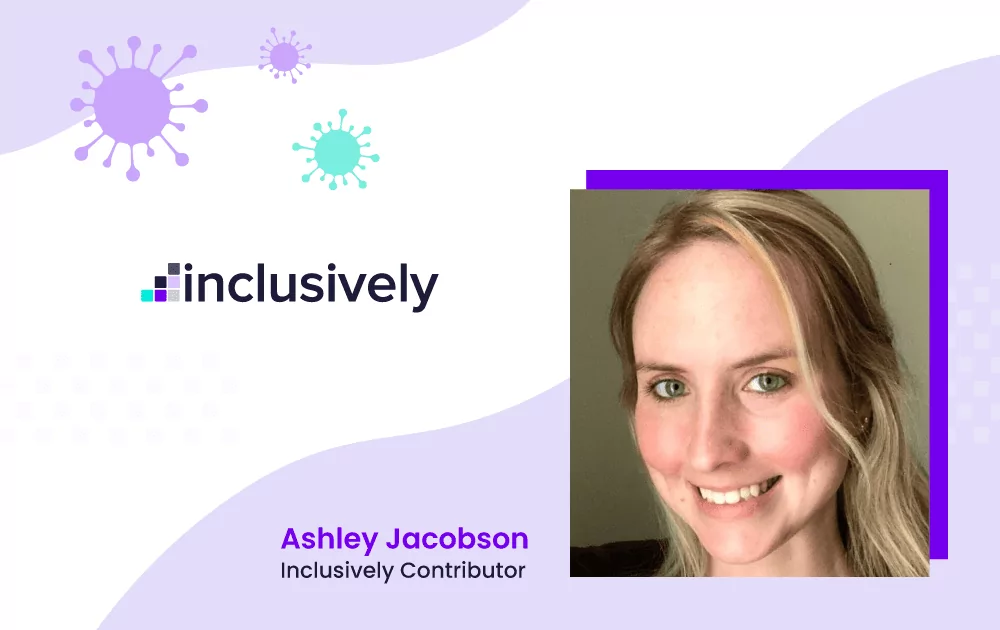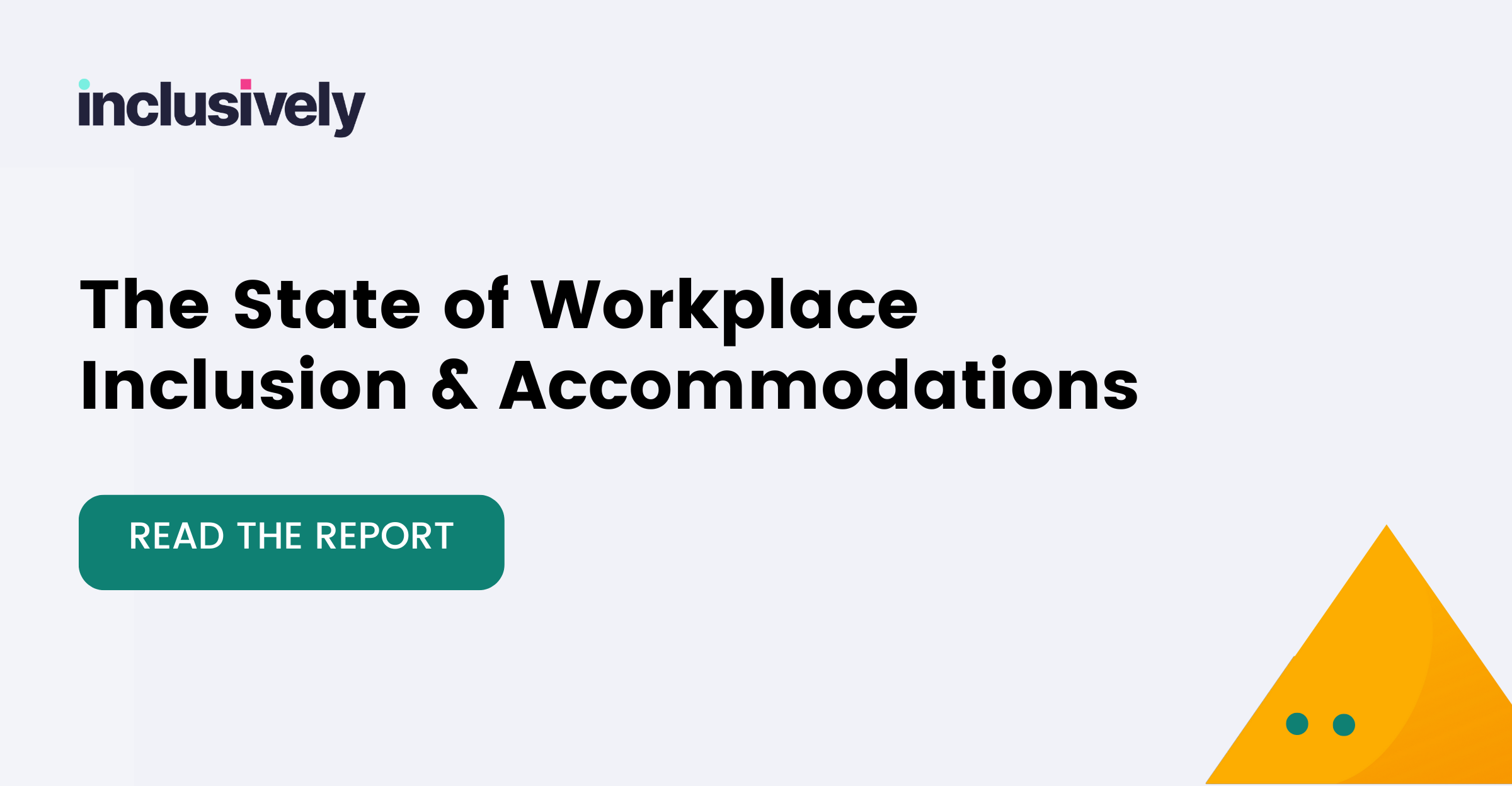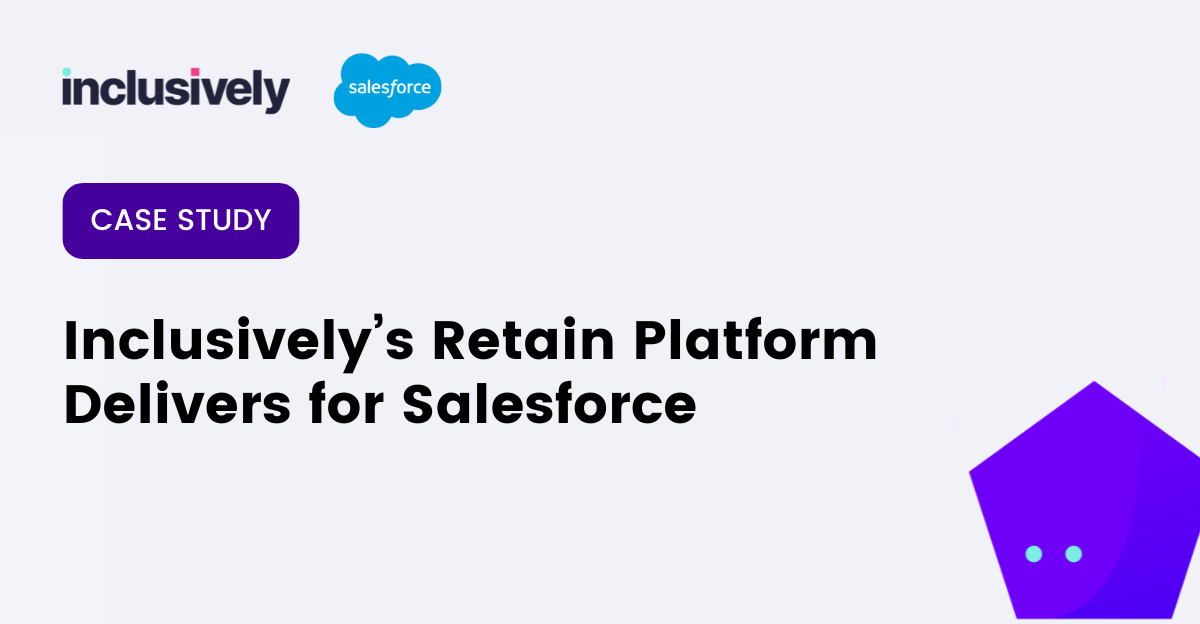What happens when you’re diagnosed with a disability during a global pandemic? Where do you turn when that disability has never existed before now? As the disability community embraces its new members with Long COVID, workplaces are wondering how to best embrace their talented team members who live with this condition.
To some, the term “Long COVID” conveys a fuzzy image of someone who had COVID-19 recently and still has a lingering cough or is a little tired. But those living with this condition — “long-haulers” — know that it can be more significant than that, and affect many aspects of their day-to-day lives.
As with any disability, each person is affected differently. However, common symptoms of Long COVID include fatigue, fever, chest pain, dizziness, joint pain, headaches and digestive symptoms. When Long COVID was first reported, people were curious if it would be considered a “disability” under the law in the United States, as it causes significant impairments to many major life functions like eating, sleeping, working, etc. In July of 2021, the U.S. Department of Health and Human Services and the Department of Justice confirmed that Long COVID can be considered a disability.
This means that individuals living with Long COVID are entitled to disability rights in schools and workplaces. These rights include accommodations — or efforts to remove unnecessary barriers — in the work environment. Accommodations allow the employee to meaningfully contribute to their team and prevent employee turnover that is known to increase costs for employers and decrease team morale.
Because Long-COVID is fairly new, some employers or individuals living with it don’t know where to begin when it comes to assessing accommodations. While vital research is needed to hone in on just how widespread Long-COVID is and how it affects employees, there are resources that can provide crucial guidance on accommodations in the meantime.
Before diving into this process, it’s important to note that accommodations should always be assessed on an individualized basis. The biggest mistake an employer can make is to rely on the phrase, “That’s just not how we do things here.” The pandemic demonstrated that it is necessary and effective to adapt. Employers went from saying “That’s just how we do things” to “This is how we do things now.” That adaptive spirit should not be abandoned as we implement accommodations for workers with Long COVID.
It’s helpful to view accommodations as strategies and modifications that allow disabled talent to meet the essential functions of their jobs without hurdles that were, often unintentionally, placed in their way. To remove those hurdles, you must focus on that employee’s disability symptoms and job. In this sense, Long COVID accommodations should be assessed in the same manner as other forms of disabilities:
- What are the symptoms experienced by the individual?
- What are the essential functions of this person’s job?
- What accommodations could help ensure access and opportunity?
- Of those accommodations, which ones are considered reasonable (e.g. based on cost, time to implement, ease of implementing, etc.)?
Let’s say you have an employee named Devin. Prior to the pandemic, Devin did not have any disabilities, but after contracting COVID-19 in February, she feels as though she’s never fully recovered. Devin’s symptoms include joint pain, headaches, fatigue, shortness of breath, depression and anxiety. Devin is still adjusting to her newly-acquired disability, but her work is important to her. She’s still good at her job, but some aspects of her work environment are contributing to her symptoms.
Devin comes to you, her supervisor, and explains that she has been diagnosed with Long COVID. You and Devin talk about her concerns, in a private space where her confidentiality can be protected from her coworkers.
Now that you understand her symptoms, the next step is to think about the essential functions of her job. Devin, as a customer service supervisor, oversees a team of four individuals who communicate with customers on a daily basis over the phone, email and through computer chat logs. Prior to the pandemic, the team worked in an office with an open floor plan with cubicles.
When COVID-19 hit, the team worked remotely, and after an adjustment period, you found that for the most part, their roles could be successfully fulfilled remotely. However, you are still paying for the lease on the office space, and you miss the team comradery and daily interactions with your coworkers. As the employer, you made a decision to return everyone to the office.
Upon returning to the office in-person, Devin realized that her Long COVID symptoms were exacerbated by a few things in her work environment. First, she realized that the lighting in her workspace was making her headaches worse. She also found that walking across the building to meetings was exacerbating her fatigue, joint pain and shortness of breath. As an aside, Devin mentions that she’s started to see a therapist to help her with anxiety and depression. However, the therapist does not work in the evenings, and she needs to find a way to continue therapy with her work schedule.
From there, a great option is to ask the employee directly if she has any ideas to address these concerns. Devin says that she is open to working remotely for the time being. If she is able to effectively monitor her team, this could be a reasonable accommodation in the short- or long-term future. But Devin also says she eventually wants to return to the office in-person, because she already feels so isolated living with her condition and looks forward to seeing her coworkers.
Exploring in-office accommodations, Devin explains that she’s been considering changing the light bulbs directly above her cubicle, or wearing sunglasses indoors, because the current lighting worsens her headaches. She also states that walking across the building for frequent team meetings in the larger conference room could be avoided by holding meetings closer to where their cubicles are, whenever possible, or by condensing multiple meetings into one longer meeting. It may even be an option to avoid holding meetings if the content to be discussed can be disseminated in email form.
Another idea she came up with was to participate in meetings by having her call in from her desk, as the rest of the team meets across the building. As far as her therapy is concerned, Devin knows she wants to continue treatment, but she is unsure about how to solve the problem of scheduling therapy during the work week.
In this situation, there are many resources for problem solving and finding the right accommodations. Devin could seek the assistance of a vocational rehabilitation counselor. Rehabilitation counselors have master’s-level training in helping people with disabilities address accessibility and disability needs in the workplace. They conduct accommodations assessments and advise the employee and the employer. Keep in mind, medical doctors provide insights on a person’s condition, but they are not always trained in workplace accommodations. They also tend to know very little about the everyday realities of their patients’ jobs. For this reason, a vocational rehabilitation counselor can be a crucial resource, as they are directly trained in this area. Other great resources would include emerging research published on this topic.
However, in Devin’s case, you agree that her ideas are reasonable and worth a try. You contact the office maintenance person, who changes out the fluorescent lights for softer ones in and around her cubicle. You also agree to hold meetings near her team’s cubicles when the meeting pertains only to her team and to allow her the flexibility of calling in from her desk to meetings that must be held in the larger conference room across the building. You also agree that on days Devin has therapy, she can use flex scheduling.
You notice that almost all of the accommodations Devin requested were free and easy to implement. The only cost was for changing the lights near her office, and even that was very cost-effective. Most employers are surprised to learn how easy and affordable it is to implement accommodations and how these accommodations benefit the entire team by creating an inclusive work environment where people are given the opportunity to thrive.
As employers navigate Long-COVID in the workplace, an open mind and adaptive approach can transform your team in ways you never imagined. Doing so nurtures a collaborative work environment, that utilizes the talent of the disability community and ultimately benefits the people you serve. Much research needs to unfold to grasp the full impact of Long COVID at work, but while no one can predict the long-term effects of COVID, there are strategies to keep your employees for the long haul.
If you’re an individual with Long COVID or other disabilities, or if you’re an employer who seeks a diverse team with disabled talent, head to inclusively.com, a site that helps you hire, maintain, and adapt your workplace for the inclusive future.
References:
1. Guidance on “Long COVID” as a Disability Under the ADA, Section | HHS.gov


